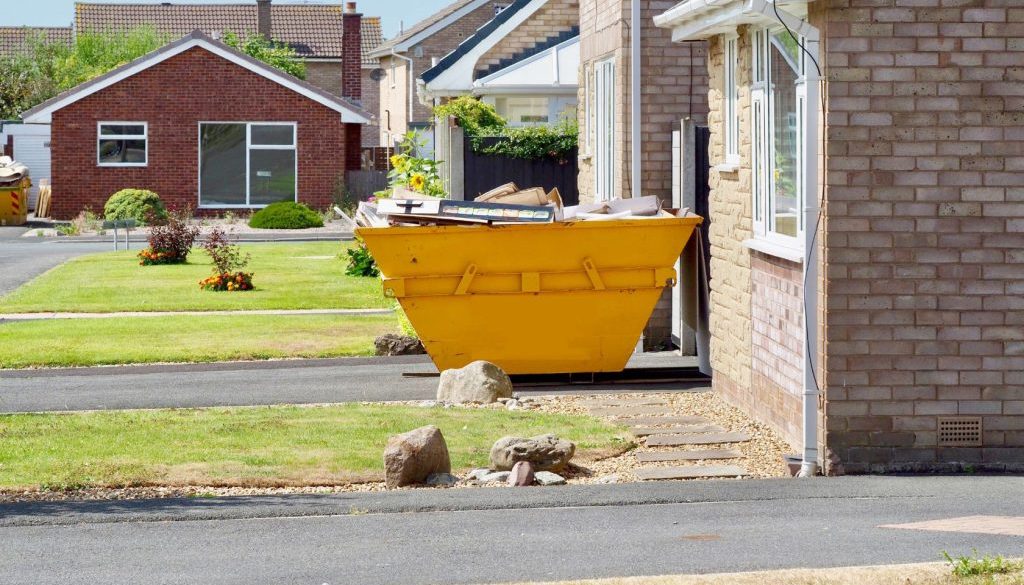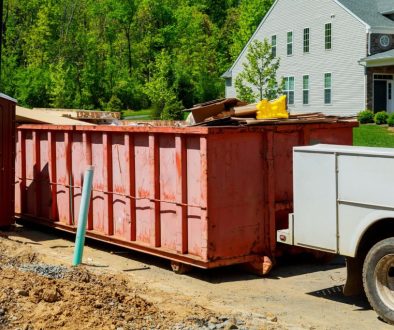Skip hire services play an essential role in effective waste management during various projects, including construction, renovation, landscaping, and home clear-outs. By offering an efficient and environmentally responsible solution for collecting, transporting, and disposing of waste, skip hire services like Enviro Skip Hire, a family-run company servicing Staffordshire, can help clients save time, effort, and the potential penalties associated with improper waste disposal.
For those new to skip hire or looking to improve their waste management process, understanding the steps and best practices involved in hiring a skip is crucial. By equipping yourself with the necessary knowledge, you can have a successful skip hire experience that seamlessly integrates with your project and ensures efficient waste disposal.
In this practical step-by-step guide, we will walk you through the essential steps for having a successful skip hire experience, covering critical factors such as choosing the right skip size, obtaining necessary permits, preparing the site, loading the skip, and adhering to waste disposal guidelines. By following these steps and tips, you can navigate the skip hire process with ease, maximising efficiency and ensuring compliance with waste disposal regulations.
Choosing the Right Skip Size
One of the most crucial steps in ensuring a successful skip hire experience is selecting the appropriate skip size for your project. Skips are available in various sizes, and making the right choice can help you minimise costs and the potential need for additional skips. Here’s what to consider when choosing a skip size:
- Evaluate Your Waste Volume: Assess the amount and type of waste your project is likely to generate. Consider factors such as the scale of the project, the materials involved, and the overall waste volume you need to dispose of.
- Familiarise Yourself With Skip Sizes: Skips come in various sizes, typically measured in cubic yards, ranging from 2-yard mini skips to 40-yard roll-on/roll-off skips. Conduct some research to familiarise yourself with these sizes and their respective capacities.
- Allow For Additional Space: To avoid overfilling or the need for multiple skips, it’s advisable to choose a skip size slightly larger than your estimated waste volume. This will provide a buffer and accommodate any unexpected waste.
- Consult the Experts: Reach out to an experienced skip hire provider like Enviro Skip Hire for personalised recommendations on the most suitable skip size for your project.
Obtaining Necessary Permits
Depending on the location of your skip and local regulations, a skip permit may be required. Permits are typically needed if the skip will be placed on public property such as a road or pavement. Here’s what you should know about obtaining the necessary permits:
- Get Informed About Local Regulations: Research local regulations or speak with your skip hire provider to determine whether your project will require a skip permit.
- Plan Your Skip Placement: Well-planned skip placement can help avoid the need for a permit and ensure efficient use of space. If possible, place the skip on private property, such as a driveway or garden.
- Organise Permits Through Your Provider: Many skip hire providers, like Enviro Skip Hire, can facilitate the permit application process for you, relieving some of the administrative burden.
- Consider the Permit Duration and Fees: Skip permits typically have a time limit, so coordinate your project timeline with the permit duration. Additionally, be prepared to pay any associated fees, which vary depending on the local authority.
Preparing the Site for Skip Hire
Before your skip arrives, properly preparing the site is essential to ensure a seamless experience and prevent any complications. Key steps to prepare your site for a skip include:
- Clear the Area: Choose a flat, stable surface for your skip and ensure the area is clear of obstructions, such as vehicles, debris, or vegetation. This will ensure ease of access for the delivery truck and safe placement of the skip.
- Plan for Easy Access: Consider the easiest access route for your skip and ensure it’s free from obstacles that could hinder the delivery or collection process. Inform your skip hire provider of any access issues or requirements.
- Protect the Surface: If the skip will be placed on an area susceptible to damage, such as turf or a paved driveway, consider laying wooden boards or other protective materials underneath the skip to prevent potential damage.
- Allocate Space for Loading: Ensure there’s a designated area for loading and unloading your skip, providing sufficient space for you and any other personnel to manoeuvre safely during the waste disposal process.
Loading Your Skip Efficiently and Safely
Efficiently and safely loading your skip is vital to maximise the available space and avoid any complications. Follow these tips for effective skip loading:
- Sort Your Waste: Before loading your skip, sort your waste into different categories, separating recyclable materials, prohibited items, and general waste.
- Break Down Bulky Items: By dismantling or breaking down large or awkwardly shaped items, you can conserve space and fit more waste into your skip.
- Load Large Items First: Place large, heavy items at the bottom of the skip to create a stable base for the lighter waste that follows. This will also help compress the waste, optimising the skip’s available space.
- Distribute Weight Evenly: Distributing the weight of your waste evenly across the skip can help prevent potential issues during transportation and make the loading process safer.
- Follow Safety Precautions: Wear appropriate protective equipment, such as gloves and safety boots, while loading your skip. If required, use appropriate lifting techniques to avoid injury.
- Abide by Weight and Height Limits: Overfilling your skip or exceeding its weight restrictions can lead to additional costs and safety hazards. Adhere to your skip’s specific limits and reach out to your provider if you require another skip for excess waste.
Adhering to Waste Disposal Regulations
Proper waste disposal is essential when hiring a skip to avoid fines or penalties. Keep these guidelines in mind when loading your skip:
- Know the Prohibited Items: Certain items are not allowed in skips due to safety or environmental reasons. Familiarise yourself with the list of prohibited items provided by your skip hire provider and make arrangements for their safe and legal disposal.
- Recycle Where Possible: Many skip hire providers, like Enviro Skip Hire, prioritise recycling and environmentally friendly waste management practices. Sort your recyclable materials to ensure they’re disposed of responsibly.
- Follow Your Provider’s Guidelines: Consult your skip hire provider’s specific guidelines regarding waste disposal and adhere to their instructions to maintain compliance with waste disposal regulations.
Conclusion:
Hiring a skip can be an efficient and environmentally responsible solution for managing waste during various projects. By following the step-by-step guide outlined above, you can have a smooth and successful skip hire experience that integrates seamlessly with your project. From choosing the right skip size and obtaining permits to preparing the site, loading the skip, and adhering to waste disposal guidelines, you’ll be well-equipped to navigate the skip hire process with ease.
At Enviro Skip Hire, we offer reliable skip hire services with a strong focus on sustainability and environmental responsibility. From small household clearances to large construction sites, we offer a range of skip sizes to suit any project. Plus, our skips are designed to minimize waste and maximize recycling, with up to 95% of the waste we collect being diverted from landfill sites. Let us help you gain confidence in your waste management choices and focus on the success of your project. Contact us today to schedule a consultation!




